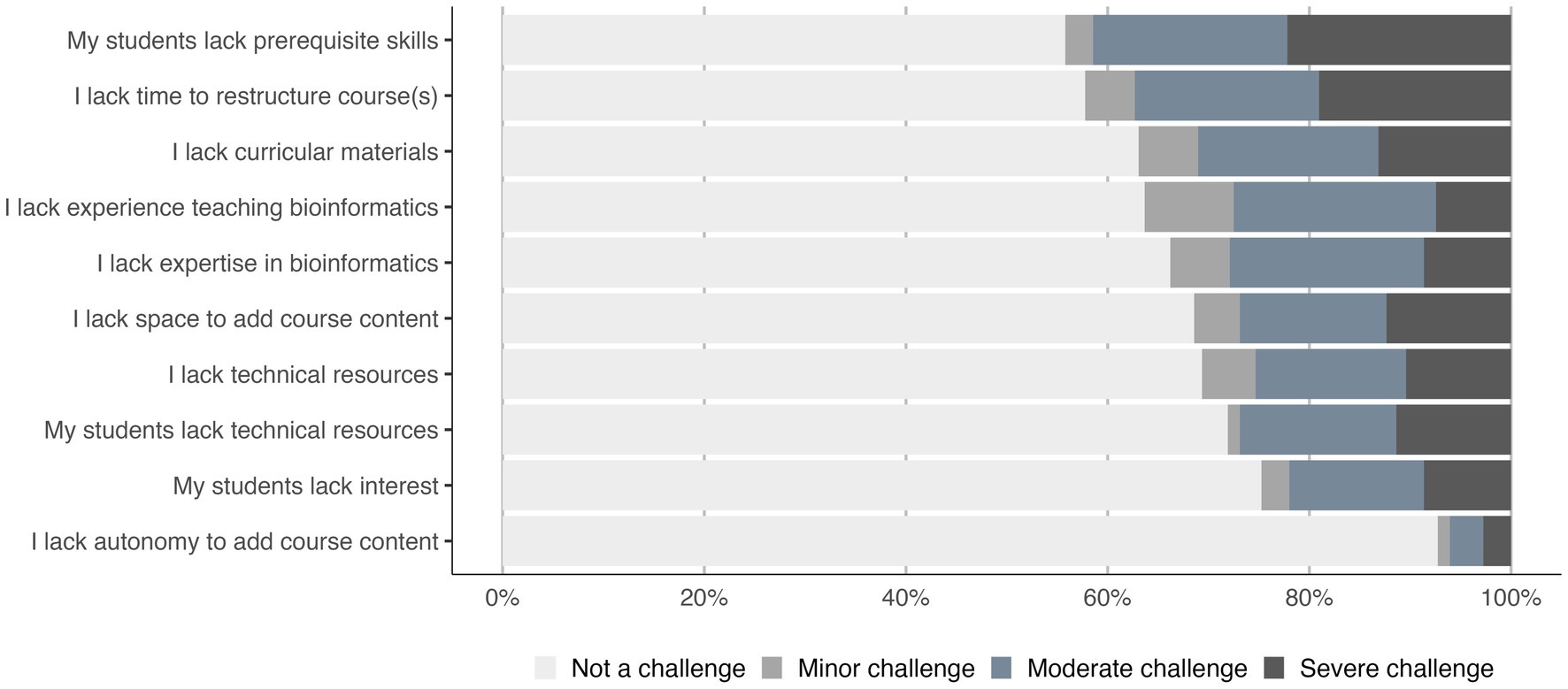Some Known Incorrect Statements About Bioinformatics Tutor
Some Known Incorrect Statements About Bioinformatics Tutor
Blog Article
The Only Guide for Bioinformatics Tutor
Table of ContentsSome Known Factual Statements About Bioinformatics Tutor Bioinformatics Tutor for BeginnersTop Guidelines Of Bioinformatics TutorRumored Buzz on Bioinformatics TutorIndicators on Bioinformatics Tutor You Need To Know
Of the total amount individuals included in the training, 80% were trainees from public college organizations, while the remaining 20% originated from personal organizations. To certify for a certificate of participation, pupils were required to attend at the very least 90% of the total training hours. As an outcome of this demand, an excellent 95% of the individuals successfully obtained their certificates, having not only met the minimum participation criteria however additionally finished all appointed activities throughout the training.
During the height of the COVID-19 pandemic, particularly between June and August 2020, the job group was charged with arranging specialized training in bioinformatics. This training was especially focused on students from the research study group Core for Research study in Applied Computing at the Federal College of Pará (UFRA) The adaptation to remote knowing systems as a result of the pandemic created a possibility to explore brand-new teaching methodologies and digital devices that boosted both reach and efficiency.
This course was made to provide an available yet comprehensive introduction of Artificial Intelligence methods, specifically as used in bioinformatics (Bioinformatics Tutor). This online format allowed participation from pupils throughout Brazil, several of whom could not have had the opportunity to attend in-person sessions.
Bioinformatics Tutor Fundamentals Explained
A remarkable feature of this training course was its focus on hands-on understanding. Approximately 50% of the overall training hours were dedicated to functional activities where students constructed smart models and applications in a variety of clinical domain names, including genetics, molecular biology, and environmental information evaluation. Extensively made use of frameworks and devices such as Spyder, Google Colab, Jupyter Notebooks, and Orange were integrated into the coursework. These platforms allowed trainees to participate in real-time information manipulation, version training, and formula testing.
Sixty of them were affiliated with numerous higher education and learning institutions in the state of Pará, while the staying twenty came from institutions found in five various other Brazilian states. By presenting Artificial Knowledge in a relevant and functional context, the effort served to link the void between theory and real-world application, supplying trainees with a strong structure for future study or employment in the area.
The training effort formed part of a broader academic outreach effort referred to as the Bioinformatics on the Road task. This job has, over the years, presented lots of students to the world of bioinformatics and computational biology. The events held under this umbrella campaign have actually taken location across multiple areas and years, as summed up in Table 1 (Listing of events, places, years, and complete numbers of trainees and instructors)
One of the most amazing end results of the Bioinformatics when driving effort has been its payment to the development of decentralized research study groups. Several of these groups, initially combined by their participation in training events, have actually because gone on to produce independent clinical study in cooperation with neighborhood scholastic organizations. The training not reference only promoted clinical thinking within the context of bioinformatics but likewise sparked collective relationships that expanded beyond the training setting. These partnerships have actually caused increased local clinical efficiency and added meaningfully to the growth of the broader bioinformatics neighborhood in Brazil.
Some Of Bioinformatics Tutor
The same group, excluding IH and RR, additionally acted as tutors for the useful training modules. Financing for the job was offered through the give 88887.200562/ 2018-00 from CAPES.
The Federal University of Pará's Office of Research (PROPESP/UFPA) likewise provided financial backing, particularly for the manufacturing of the last manuscript. The authors state no business or financial conflicts of rate of interest that might have influenced the research. Moreover, all opinions and analyses expressed in this short article are entirely those of the writers and do not always reflect those of their respective establishments, the author, editors, or reviewers associated with the publication procedure.

Bioinformatics Tutor Fundamentals Explained
From an instructional viewpoint, the teaching method used in the training was purposefully interactive. Courses were conducted in a fashion that urged pupil participation and discussion, exceeding memorizing memorization to discover how ideas are established, used in day-to-day live, and tested in scholastic setups. The training viewpoint concentrated on nurturing both solid and having a hard time students, providing personalized assistance, and structure confidence via continual mentorship and perseverance.

Each group, consisting of about 36 individuals, was supported by 3 advisors-- many of whom were postdoctoral researchers with customized competence. These advisors not only aided make the group tasks however also promoted their execution, making sure that each research inquiry anonymous was both suitably tough and relevant. The objective was to give a biologically sensible context that individuals could check out with flexible purposes and accessibility to curated datasets.
For extra insights into the method and results of this project-based knowing approach, viewers are routed to S1 Text, that includes detailed summaries of the pedagogical structure, evaluation approaches, and job motifs used in the training sessions.
Not known Factual Statements About Bioinformatics Tutor
Of the total amount individuals included in the training, 80% were students from public higher education and learning organizations, while the continuing to be 20% came from private organizations. To certify for a certification of participation, students were needed to participate in at the very least 90% of the overall training hours. Significantly, beyond the students that More hints registered in the training sessions, 7 knowledgeable trainers got involved in supplying the programs, while 3 dedicated research professors collaborated the general training procedure. Around 50% of the overall training hours were devoted to functional activities where pupils developed intelligent models and applications in a variety of scientific domains, consisting of genes, molecular biology, and ecological information analysis. The training not only promoted scientific reasoning within the context of bioinformatics but additionally sparked joint partnerships that extended past the training atmosphere.
Report this page